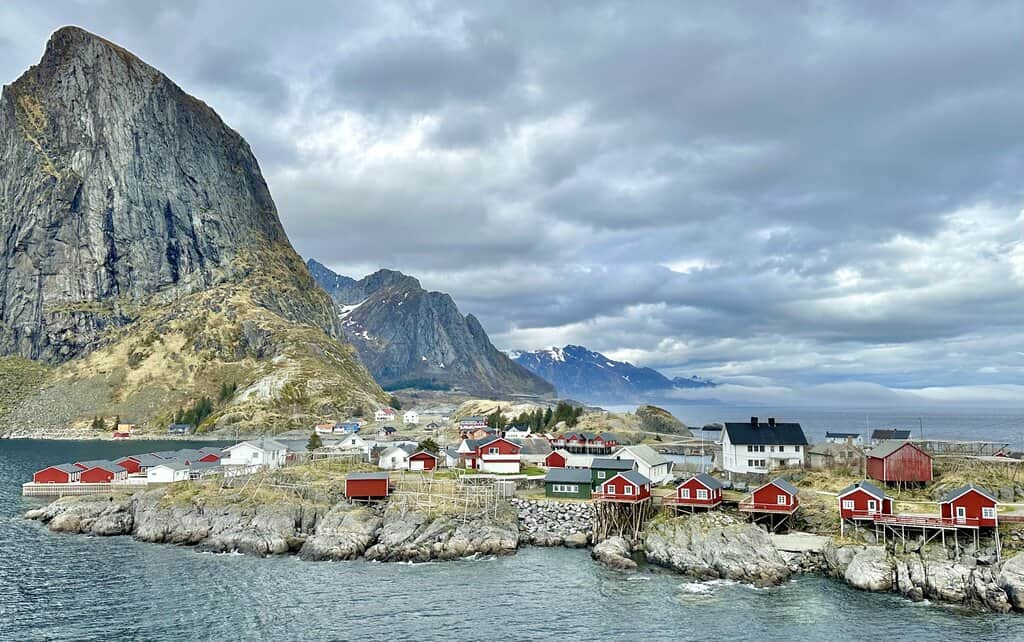The Lofoten Islands in Norway are undoubtedly one of the most beautiful places on the planet. A rugged chain of mountainous islands just north of the Arctic Circle, the Lofoten Islands are still flying under the radar for most world travelers. But in recent years many people have started to discover this amazing Arctic landscape.
You’re likely one of them, as you’ve landed on this webpage. So here we will go over the most important Lofoten Islands travel tips for first time visitors to have an epic adventure. You’ll be blown away by the beauty of Lofoten so long as you come prepared. But don’t worry, I’ve got you covered!
- Lofoten Islands Basics
- 1: Rent a car or campervan
- 2: Stay in a rorbu
- 3: Manage your expectations about the weather
- 4: Don’t wait for the weather to get better because it will, in fact, get worse
- 5: There is not a whole lot to do on a rainy day
- 6: Use yr.no for your weather forecast
- 7: Always carry your rain jacket
- 8. Bring warm clothes regardless of the season
- 9. There are not as many restaurants as you would think
- 10: Book accommodations with kitchens
- 11. Use AllTrails for hikes
- 12: Be flexible with your daily schedule
- 13: If you can, visit between June and August
- 14. Make stops for photos
- 15: Don’t book excursions too far in advance unless you are prepared to pay top dollar to see clouds
- 16: Cod burgers are on every menu, but know that it’s just a minced cod sandwich
- 17. Try some stockfish
- 18. There are no blackout curtains
- 19. Spend a night at the beach
- 20. You don’t need to carry any cash whatsoever
- 21. Bring your drone
- 22. You can pitch a tent anywhere
- 23. Supermarkets are closed on Sundays in Norway
- Lofoten Islands Travel Tips – Frequently Asked Questions
- Final Word
Note: this article contains affiliate links, which means that should you purchase something or get a quote through them I may make a small commission at no additional cost to you. This helps keep the site running with up to date information. I do not represent World Nomads, Booking.com, Manawa, Discovercars.com, or Rentalcars.com. This is information only and not a recommendation to buy the product mentioned in this article.
Lofoten Islands Basics
First, let’s start with some basic information about the Lofoten Islands.
Want to skip ahead to the Lofoten Islands tips? Click the shortcuts in the Table of Contents above.
What are the Lofoten Islands?
The Lofoten Islands are an arpeggio in Arctic Norway that are known for striking mountains that come right out of the sea. The islands are also known for charming old fishing villages, endless hiking opportunities, the northern lights and the midnight sun. Only about 25,000 people live on the islands, though Lofoten lineage traces back over 1000 years.
Where are the Lofoten Islands?
The Lofoten Islands are in Northern Norway on the North Atlantic coast. The chain of islands is just north of the Arctic Circle, meaning they experience the polar night in winter and the midnight sun in summer.
The largest city – if you can call it a city – is Svolvaer, home to a whopping 4700 people. Leknes, the second biggest town, has about 3500 people, and after that it’s just small towns and villages.
The islands start at Hanoy and run south from there to the end of the E10 road at A (that’s the name of the village), covering about 180 km. The nearest major population centers are the cities of Narvik and Harstad, home to over 20,000 people each. While the nearest motable city is Tromso, a good 380 km north of Hanoy.
Oslo, the capital of Norway, is a solid 90-minute flight from the Narvik/Harstad airport, or a good 20-hour drive. So yeah, Norway is BIG!
How to get to the Lofoten Islands
For a remote Arctic destination, the Lofoten Islands are surprisingly easy to get to, thanks to the fact that quite a few people actually live there and regional airports are common. Most people fly into one of these regional airports and rent a car.
For more information about getting there, check out my detailed guide on how to get to the Lofoten Islands.
Weather in the Lofoten Islands
The weather in the Lofoten Islands can only be described as pretty damn gloomy most of the time. We will go into much greater detail about the weather in the sections that follow, as many of the Lofoten Islands travel tips are weather-related.
The islands are unique for having a temperate Arctic climate. At any given time in the year, the daily high and the daily low are not that different, typically only varying by 2-3 degrees Celsius.
It doesn’t really ever get hot. And it doesn’t actually get that cold, with the average low in January being about -1 (30 F). The issue in Lofoten is the rain and cloudiness. More on that in a bit.
Food in the Lofoten Islands
For a sparsely populated place, the Lofoten Islands have a few unique culinary creations. It’s one of the only places in the world that has a climate that allows for outdoor natural dehydrating of cod fish. The dried cod, known as stockfish, is set out to dry on wooden racks along the coast.
The temperature has to stay right around freezing for the fish to dry properly. It’s left to dry about 3 months in the Arctic winter conditions before being pulled from the racks and processed. This either means shipping abroad or soaking in water for 7-10 days to make it edible.
It might not sound like anything special, but a pan fried stock fish filet is to die for!
They also do salted cod in a tomato based stew, known as bacalo, which actually has its origins in Spain. It’s also amazing and can be found on just about every restaurant’s menu on the islands.
So yeah, Lofoten Islands food = cod 🙂
Travel Insurance
Before you set out on your journey, just make sure to purchase travel insurance so that you’re protected for the unexpected. We use World Nomads and had a good experience the one time we unfortunately had to actually use it. World Nomads provides travel insurance for travelers in over 100 countries. You can search for a coverage plan using the link below.
Now without further ado, here are my top Lofoten Islands travel tips for first time visitors to the Norwegian arpeggio.
1: Rent a car or campervan
The Lofoten Islands are connected by one main road, the E10. It’s a well maintained road and it can get quite busy. The road can be quite narrow in spots and a passing truck the other direction can be pretty scary. Just slow down when a big truck or bus passes on a narrow stretch of highway.
Having a vehicle of your own is almost necessary here. So you’ll want to rent a car or a campervan.
It’s possible to explore the islands without a car, and many people do it. There is a surprisingly efficient bus network that runs up and down the E10 all day. The issue with the bus is that it stays on E10, so if you want to go anywhere off the main road – and there are plenty of places you will want to go off the main road – you will have to hitchhike or find a ride somewhere.
Having a car is really necessary in the Lofoten Islands. With a car you’ll have the freedom to set your own pace and stop wherever you want.
For booking rental cars in Europe we usually use Discovercars.com. They nearly always have the best rates. However, they unfortunately don’t have any agreements with any of the rental companies in the Lofoten Islands. So up in Lofoten we use Rentalcars.com. You can search for a rental car from Harstad/Narvik Airport or one of the other regional airports using the search bar below.
2: Stay in a rorbu
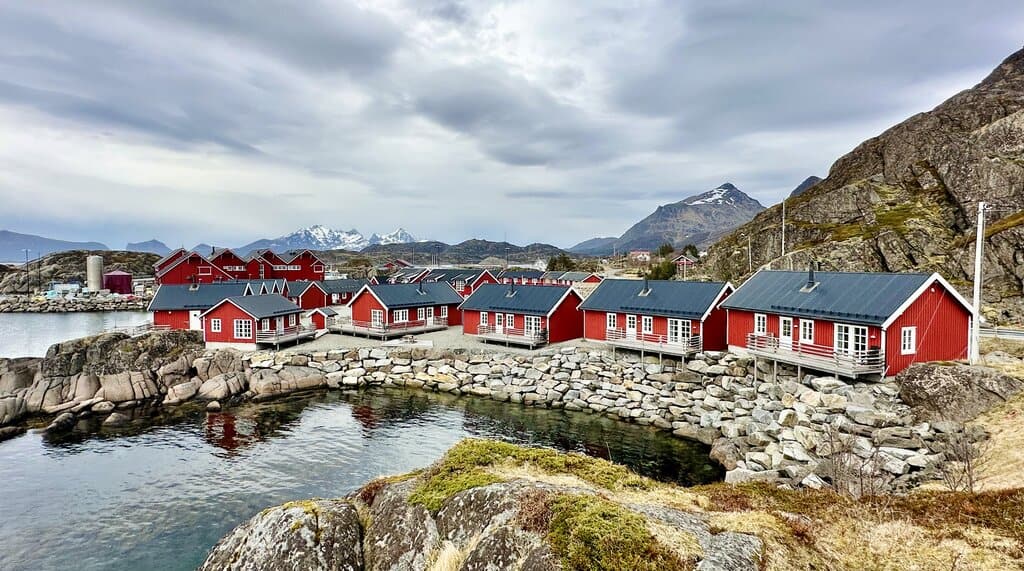
A rorbuer – often shortened to just “rorbu” – is a traditional fisherman’s cabin in northern Norway. Built from local timber and often extending over the water, rorbus were basic cabins of usually just some bunk beds and a cooking area.
So why stay in one of these rorbus? Well, don’t worry. These days the Norwegian rorbu has been reimagined into a tourist friendly cabin, complete with a kitchen and often multiple bedrooms.
The rorbus you’ll find in booking.com are far bigger than the rorbus of 900 years ago, and they’re a real joy to stay in. Finding a rorbu to stay in is not hard. Most rentals in Reine, Henningsvaer, and other popular spots in the islands are rorbus.
For an awesome rorbu near Reine we highly recommend Rostad Retro Rorbuer. It has the best view from the room in Lofoten and you can book a room where you can literally stare at massive mountains from the comfort of your bed!
3: Manage your expectations about the weather
You’ve probably seen all the amazing photos of the Lofoten Islands online, which has led you to book this trip. And I’ll reassure you here that the Lofoten Islands are simply one of the most beautiful places on the planet. Words can’t even describe how stunning the steep mountains coming out the Norwegian Sea are. But let’s start with a cold, hard reality check: you might not even see these mountains.
The Lofoten Islands are notorious for having awful weather. While beautiful, sunny days do in fact happen, it’s an exception to the norm. The norm is a grey sky with a mixture of high and low clouds. The rugged mountains make their own weather and clouds like to hover over them, blocking their peaks from your view.
If you are visiting the islands for one week or less, you should be prepared to not see the sun, even when it’s 24 hours of daylight.
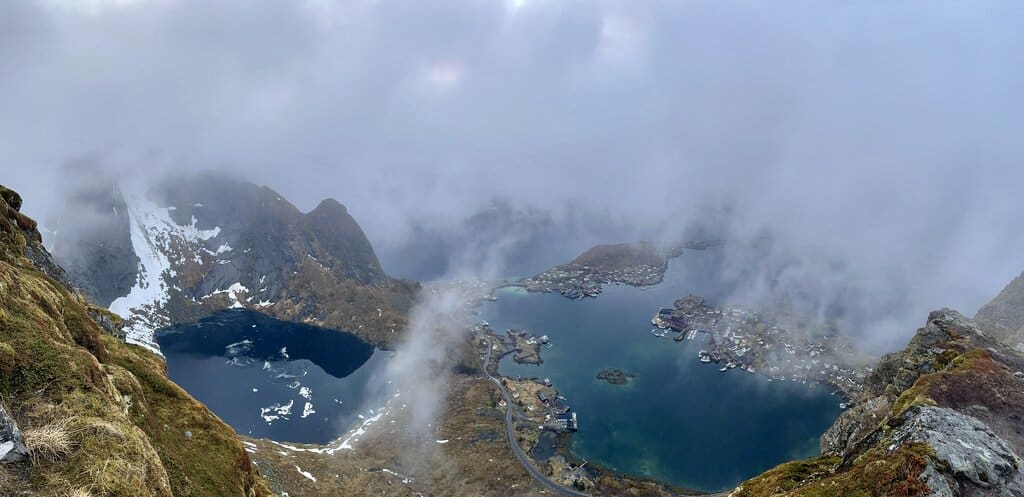
4: Don’t wait for the weather to get better because it will, in fact, get worse
Perhaps the biggest lesson we learned on our trip to Lofoten was to never wait for the weather to improve. If you think things will get better, it will most likely get worse. And there is always a worse. Unless you see the forecast from multiple sources saying that the skies will clear, don’t count on it.
We got burned by this twice on our trip. If there are high clouds – meaning that at least the mountain peaks are visible – capitalize on this opportunity. Do not sit around hoping that the clouds will break and you’ll get some sunshine.
If you wait till tomorrow, there is a good chance tomorrow will actually be worse. Low clouds are common on the islands, so if you ever get high clouds, make the best of it.
If you get reliable info that there might be some sun in the forecast, however, do make use of it. We twice started hikes after dinner because the forecast was predicting possible cloud breaks late at night. Once it was correct and we actually got some blue sky, and the other time low hanging fog spoiled our hike. But oh well, this is life in Lofoten!
5: There is not a whole lot to do on a rainy day
For a place that is known for miserable weather, the Lofoten Islands really don’t offer too many indoor and rainy day activities. There are a few museums, such as the Lofotr Viking Museum in Borg and the Stockfish Museum in A. But aside from these museums, indoor activities are not few and far between
Most days of bad weather involves just overall cloudiness or light drizzle. But you can get substantial rain. Rain that’s hard enough to keep you from doing anything outside. And in that case, I hope you brought a good book, because you’ll be chilling in your room waiting for the weather to clear.
The Lofoten Islands are an outdoors-based vacation destination. So to properly prepare yourself for the weather, you have to be ready to skip a few things you wanted to do and relax in your room. Don’t worry, it’s quite refreshing to just sit back and relax and forget about all your worries.
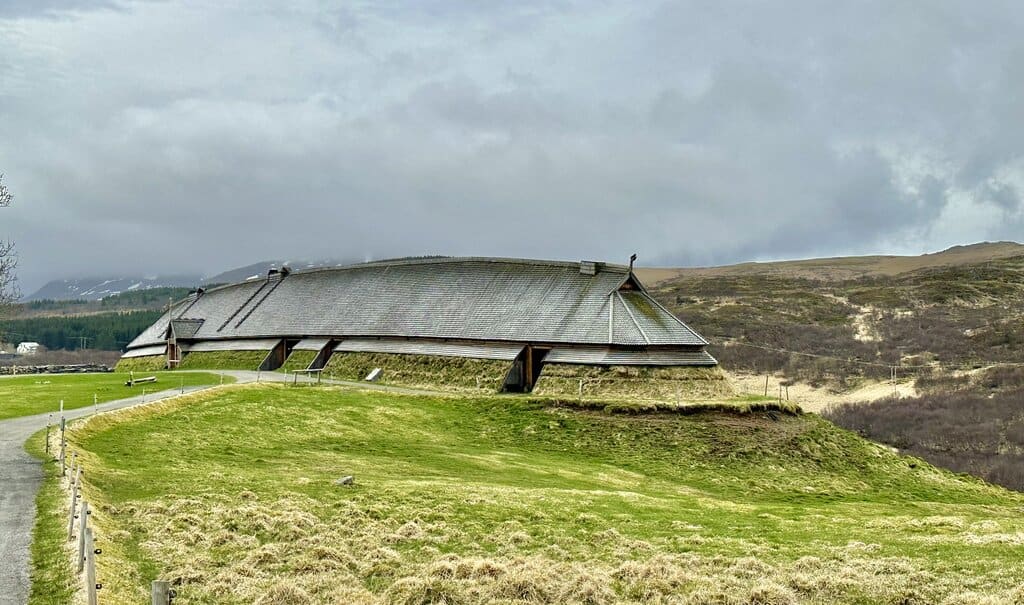
6: Use yr.no for your weather forecast
Norway’s official government weather service is yr.no. For getting the best forecast in Norway, be sure to use this website. It has every small town in the country. They don’t have an app, but it will save your preferences if you have it open in any internet browser.
Oddly enough, yr.no also has forecasts for the rest of the world and a few other countries use it. If you’re in northern Georgia, you’ll want to use it to get your forecasts. Never mind how far Georgia is from Norway.
7: Always carry your rain jacket
Even where there is no rain in the forecast, unless it’s a perfectly blue, clear skied day, be sure to carry your rain jacket with you at all times.
It can rain at any moment, even if the forecast says it’s not going to. Usually the forecast is pretty accurate, but it doesn’t account for light drizzle and that Seattle-style misty precipitation that seems to fall at some point every day.
8. Bring warm clothes regardless of the season
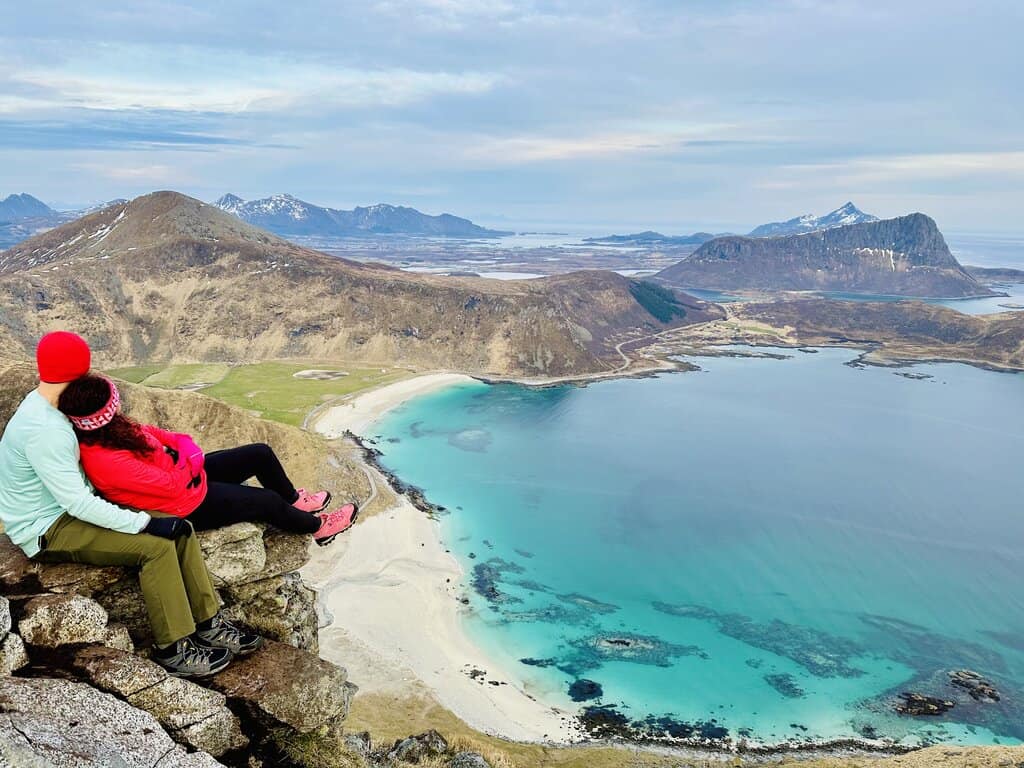
Even if you’re visiting Lofoten during peak summer, it can still be pretty damn cold, especially atop the mountains. The typical summer high temperature is only about 15 degrees (59 F) and it can be colder. So you’ll always need to carry warm clothes, gloves and a beanie.
It’s also not unusual to have a few days of 24 degrees (73 F) so be sure to also bring some shorts so you can enjoy a nice day when it comes!
If you’re visiting in winter, know that it really never gets too cold, often staying just below freezing. So while you still need to bundle up, it’s not like you’re in Edmonton or Chicago!
9. There are not as many restaurants as you would think
For a touristy place, Lofoten hasn’t quite caught up to the number of visitors it gets when it comes to restaurants, cafes and bars. In fact, there really aren’t that many. In heavily visited Reine, there are only two restaurants and one cafe (cafes are only breakfast and lunch).
It’s quite shocking when you think about how many people come through the islands every year. Norway is quite expensive so it could be that people prefer to cook at home to save money. And most accommodations have a kitchen included.
So maybe the demand isn’t there. But if you like to eat out, just know there aren’t that many options when you’re outside the main cities of Leknes and Svolvaer.
10: Book accommodations with kitchens
Building off the last one, be sure to book places with kitchens. Most of the Rorbus do have kitchens, but if you’re staying in a standard hotel you likely won’t have a kitchen.
If you don’t have a kitchen, refer back to the last tip about the lack of restaurants. There are ample rentals available with full kitchens though. So be sure to look at all the photos and inquire if you’re not sure that your accommodation has cooking supplies.
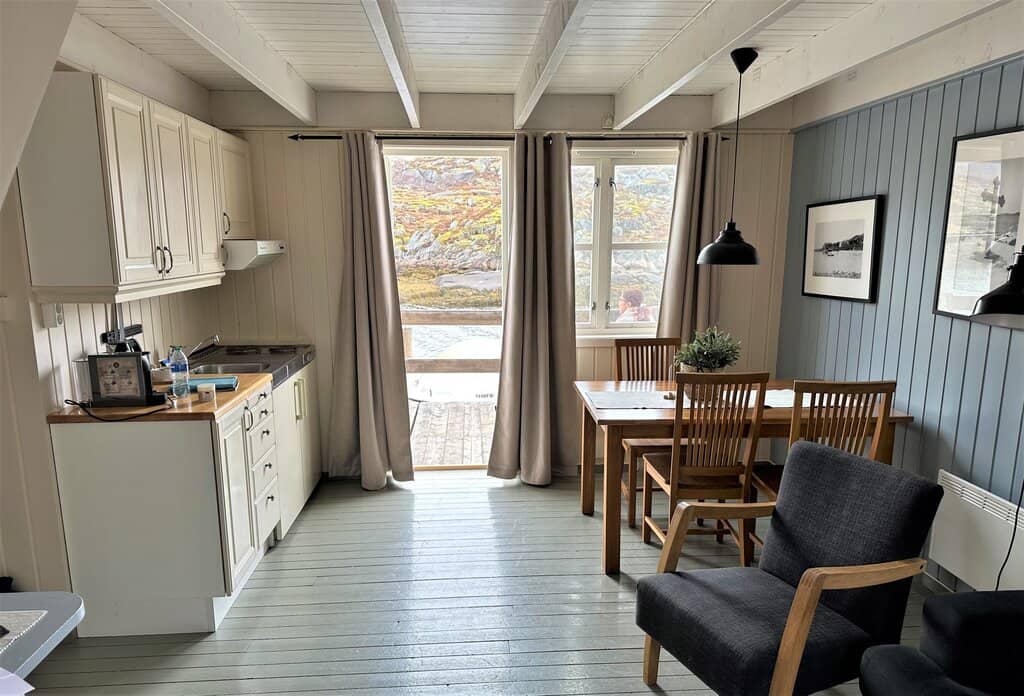
11. Use AllTrails for hikes
The Lofoten Islands are a hikers paradise. Seriously. Some of the most spectacular hikes in the world can be found here. And really, there’s not a whole lot else to do on land other than hiking. If you’re not into hiking, this really isn’t the trip for you.
There are tons of guides to the various Lofoten hikes online – (like my article on the Mannen hike at Haukland Beach). But for browsing the various options you’ll want to use the AllTrails app or website. Seasoned hikers are already aware of this website, as it’s quite amazing.
Download it on your phone and it will track you on the map as you go. It also shows elevation gain, which is just as important as distance when talking about hiking. Especially in Lofoten, where the mountains are ridiculously steep. You can gain 1500 feet of elevation in less than a mile!
12: Be flexible with your daily schedule
If you’re visiting the Lofoten Islands between late May and late July you’ll be treated to 24-hours of daylight. At the edges of that period the sun will set, but it won’t go far enough below the horizon to cause darkness in the sky. Imagine like a 5-hour sunset.
This light means that hiking and outdoor activities are possible at any hour of the night from the beginning of May through mid-August. And while you might not want to go for a hike at 11 PM, you might have to to get the best weather.

Being flexible with your hiking schedule is the best. If it’s going to be nicest between 11 PM and 1 AM, then go hiking at 11 PM. It’s worth it to get the best chance of blue skies.
We found that the best weather in May was typically between 24:00 and 4:00, right when normal people like to sleep. If you prepare yourself to go for a night or early morning hike, you’ll feel better about it when the time comes.
13: If you can, visit between June and August
All this being said about the weather in the Lofoten Islands, the best months are still June-August. While you still might have 7 straight days of rain, these months do provide you with the best chances to have clear days (or nights since it never gets dark).
The islands enjoy the Midnight Sun from late May to Late July, so if you want to see a sunset that lasts three days, visit near the end of July. By the end of august the skies actually get dark again.
But really, it’s all about the weather for visiting the Lofoten Islands. And summer just offers better chances for favorable skies.
14. Make stops for photos
The Lofoten Islands are one of the most Instagrammable places on earth. Everywhere you look there are amazing photo ops. From epic mountains to turquoise beaches to quaint fishing villages and everything in between, Lofoten will satisfy and photographer’s wishes.
So plan your drives and schedules around taking time to pull over and take photos. While there are plenty of photogenic spots in the main towns, sometimes the best places are in the middle of nowhere on the side of the road.
If Google Maps tells you that the drive takes 2 hours, add some extra time for photo stops. You won’t regret it!

15: Don’t book excursions too far in advance unless you are prepared to pay top dollar to see clouds
Continuing our theme of preparing for crappy weather, some of the best things to do in the Lofoten Islands involve getting out on a boat or kayak. Now, some people might be totally fine with going on a cruise or kayaking around on a crappy day. But I’m not one to spend $100 to see grey clouds and be pelted by sideways rain.
If you can, wait to book things like fjord cruises or kayaking adventures to the last minute. While this does put you at risk of missing out if the excursion gets fully booked while you’re procrastinating, I believe it’s worth it to avoid misery and disappointment.
This all being said, if you want to do a fishing trip like this one– a common excursion in Lofoten – that doesn’t really require good weather so go ahead and book that in advance. Just be prepared for the company to cancel on you if they don’t have the minimum number of guests booked. We were excited about going on a fishing boat until our tour was canceled because they didn’t have the minimum number of guests booked.
When you do want to book a tour, you can book a ton of adventures and excursions in the Lofoten Islands with Manawa. Manawa is the leading tour booking agency in northern Europe and they have a ton of options, some of which are shown here:
- Trollfjord Cruise from Svolvær
- Kayaking Excursion in Lofoten
- Minibus Northern Lights Chase from Svolvær
- Arctic Snorkeling
There are tons of other adventurous tour options in Lofoten as well. There is never a shortage of things to do. I just hope you get good weather!
16: Cod burgers are on every menu, but know that it’s just a minced cod sandwich
Lofoten and cod go together like spaghetti and meatballs. You will see cod on literally every restaurant menu you look at. It’s a vital source of food for the local population and outside of tourism, it’s the next biggest factor in their economy.
Just know that when you see a cod burger on the menus that it’s not a slab of fresh cod. That would be a cod sandwich. A cod burger in Lofoten is literally a minced cod patty, similar to a hamburger. It’s not 100% cod either, as it’s mixed with breadcrumbs and other ingredients.
Don’t worry though, it’s still frikin delicious. Just be aware that it you want a cod sandwich, don’t order a cod burger.
17. Try some stockfish
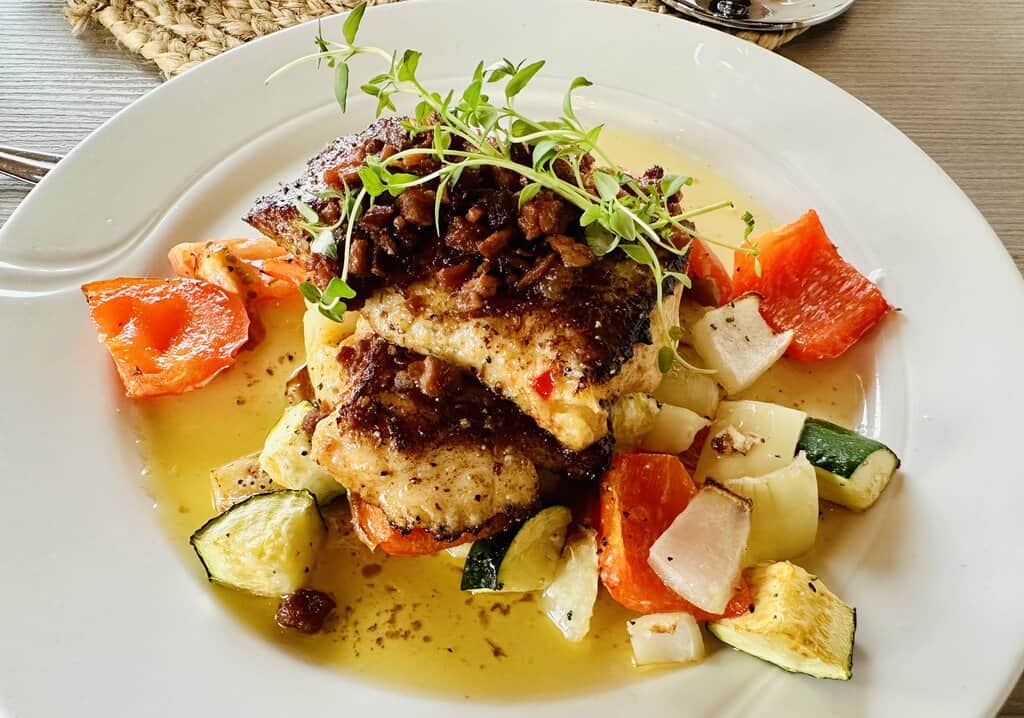
Speaking of cod, the Lofoten Islands are known for a unique way of preserving and preparing cod. As discussed earlier, they hang the cod out to dry on wooden racks along the coast. It dries out in the open air, exposed to all the winter elements for about 3 months before it’s considered preserved.
After drying the fish is literally hard as a rock. In order to eat it, it needs to be soaked in water for over a week before it can be cooked. It’s a lot, but don’t worry. You don’t have to do it yourself.
Many restaurants will have stockfish – “torrfisk” in Norwegian – on their menus. It’s expensive but so, so worth it. If you’re going out to eat in Lofoten, it’s highly recommended to get some stockfish.
18. There are no blackout curtains
You would think the land of the Midnight Sun would feature sufficient blackout curtains in rental accommodations. But you’d be wrong. In fact, most rorbus just have standard blinds or curtains, not curtains designed to keep all light out.
So if you’re a light sleeper or someone who can’t sleep in daylight, you might want to bring a sleeping mask. From May-August your room will never get fully dark.
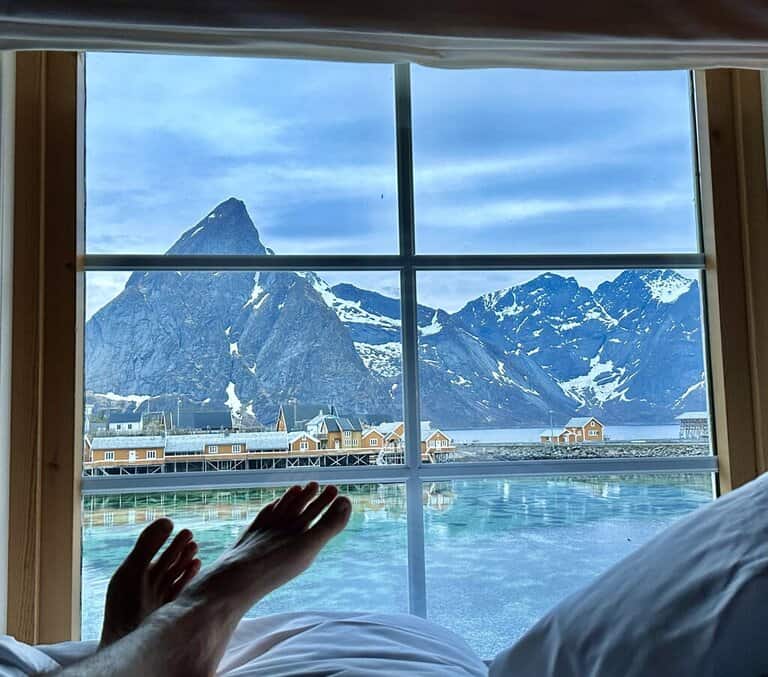
19. Spend a night at the beach
The Lofoten Islands have some of the most beautiful beaches in Europe. Yes, that’s right. These rugged Arctic islands have incredible beaches. I’m not messing with you. Haukland Beach was named the most beautiful beach in Europe by Lonely Planet in 2023.
Lofoten is known for crystal clear, turquoise water and soft, white sand. Something you’d expect in Turks and a Caicos and not Norway. But it’s very much real. The beaches are stunning, and the sharp mountains that frame the coast make for jaw-dropping views.
There are various beaches in Lofoten that offer beach cabins or rorbu rentals. The best beaches are on the west coast and some to consider include Ramstad, Haukland, Vik, and Unstad.
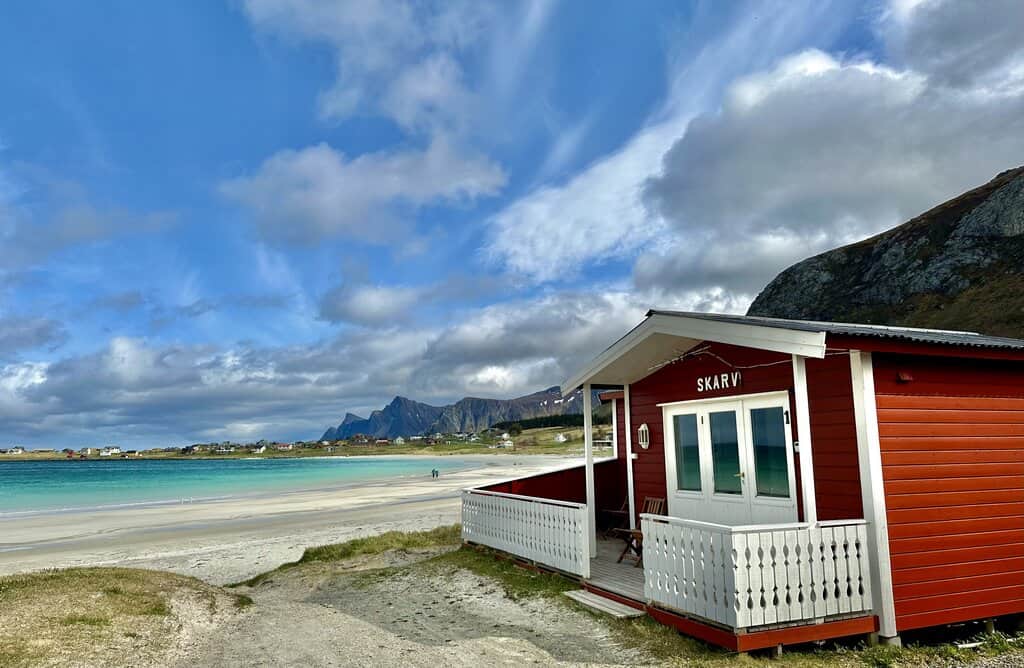
20. You don’t need to carry any cash whatsoever
If you’re used to traveling internationally, you might be tempted to stop at an ATM and get some cash. But here in Norway, that’s completely unnecessary. Literally everywhere takes credit card and you don’t need to carry any kroner at all.
Save yourself the ATM fee and just use your credit or debit card everywhere. Be sure you’re using a card with no foreign transaction fee, however, If you don’t have one of those, it might be worth it to get some cash.
21. Bring your drone
For those with a drone, Lofoten is heaven. The islands are perfect for flying a drone around and some of the most famous photos you’ve seen of Lofoten are taken from a drone.
Some places on the islands have no-drone zones, but you’re mostly free to fly your drone wherever you want. Perhaps the most famous photo of Lofoten is the view of the football (soccer) field in Henningsvaer. The famous photo requires a drone, so if you have one, fly it high and make us drone-less travelers jealous.
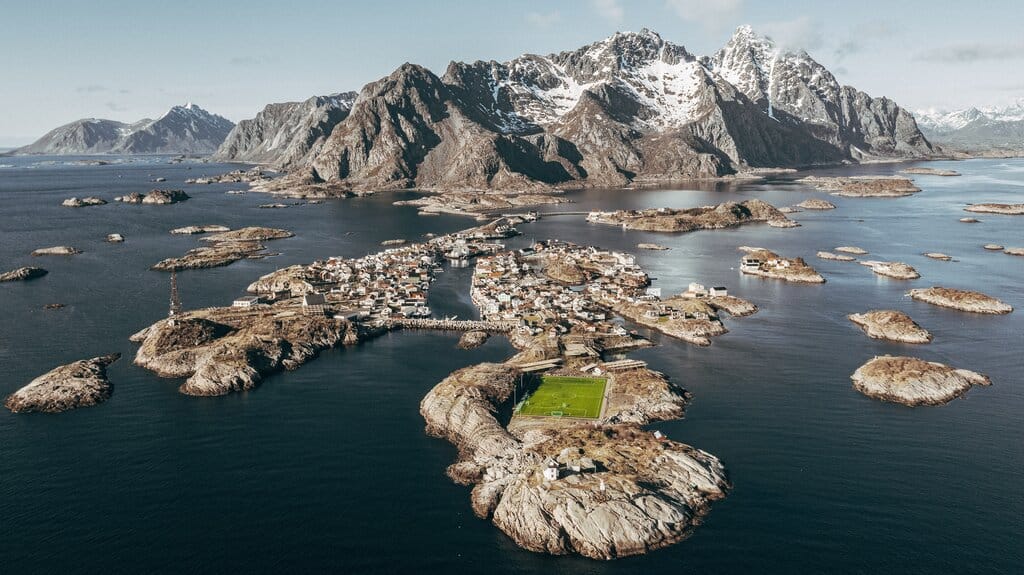
22. You can pitch a tent anywhere
Freedom camping is allowed in the Lofoten Islands. As long as you’re not on someone’s property you can pitch your tent literally anywhere. You’ll see tents scattered around Lofoten, especially in the summer. If you’re freedom camping, you’re on your own though. No services or anything. But hey, it’s free!
23. Supermarkets are closed on Sundays in Norway
This goes for all of Norway in general, but they are pretty old school when it comes to things being closed on Sundays. Supermarkets and most other stores are closed on Sundays. So if you need anything on a Sunday, you’ll have to go to a gas station and hope they have it in the minimarket.
Lofoten Islands Travel Tips – Frequently Asked Questions
How many days are needed to visit the Lofoten Islands?
You need a minimum of 4 days to properly see the Lofoten Islands. It’s not a weekend trip destination. Even then, 4 days will be very busy and you’ll cover a lot of ground and have to pick and choose your stops.
It’s better to spend a week, and even then it’s better to stay longer to give you the best chance of having a few days of decent weather.
What is the best time of year to visit the Lofoten Islands?
The best time of year to visit the Lofoten Islands is mid June through the end of August. Days are long and the weather is the warmest, though it’s entirely possible to have a week of dreary, cold rain even in peak summer.
When can you see the northern lights in the Lofoten Islands?
You can see the northern lights in Lofoten from the end of August to mid April, with the best changes being between fall equinox in September and the spring equinox in March.
As beautiful as it is to see the northern lights from Lofoten, however, it’s not exactly the best place to see them due to the cloudy weather I’ve discussed over and over again in this article.
It’s certainly the most beautiful place to see the northern lights in the world should you get a clear night. But don’t plan a trip to Lofoten just to see the aurora. Try Kautokeino, Abisko (Sweden) or Kilpisjarvi (Finland) instead.
For more info about the northern lights refer to my top 10 tips for viewing the northern lights.
Can you swim in the Lofoten Islands?
The water in the Lofoten Islands is safe to swim in provided you don’t stay in too long. The Arctic water is just above freezing in the winter and not too much warmer in the summer. An extended dip in the water can lead to hypothermia.
A popular thing to do in Lofoten is to take the polar plunge. The polar plunge is a generic term just used to describe going in water that is just above freezing. So by going in the water in Lofoten you’re automatically doing the polar plunge. It’s not for everyone, but can be thrilling nonetheless.
The water is stunningly gorgeous in Lofoten. It’s crystal clear and you can see all the way to the bottom of the sea. Just don’t get hypothermia and you’ll be golden!
Are there mosquitoes in the Lofoten Islands?
If you’ve been to Alaska in the summer you might be wondering if the Lofoten Islands have mosquitos. You’re in luck, though. While most of the Arctic has god awful mosquitos, Lofoten does not. You might see some in July and August, but probably not enough to even notice.
As we’ve discussed already, Lofoten has a unique climate found nowhere else in the world. The islands are thin and long, and you’re never far from the coasts. This keeps it from being a mosquito habitat like Arctic places more inland.
Final Word
Now that we’ve gone though 23 important Lofoten Islands travel tips, are you excited to visit!? All of this was not meant to deter you from visiting the Lofoten Islands, but just to have you make sure you manage your expectations and don’t expect picture-perfect experiences every day.
The Lofoten Islands are absolutely amazing and if you’ve allowed over a week on your trip, you’re bound to get at least a couple of decent days. The weather is a big factor in your trip, and you have to be prepared in case the weather gods are not on your side.

